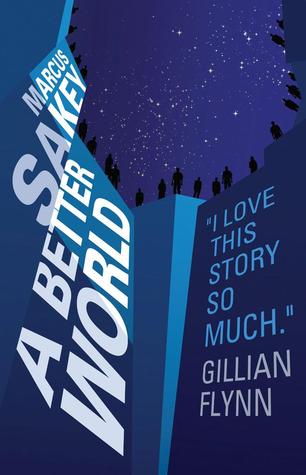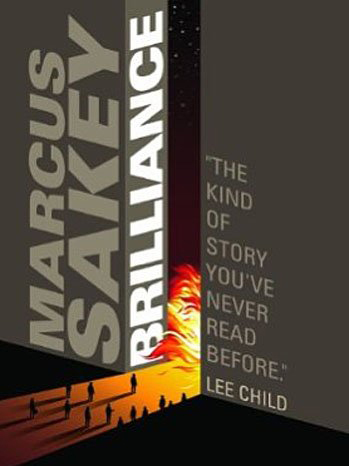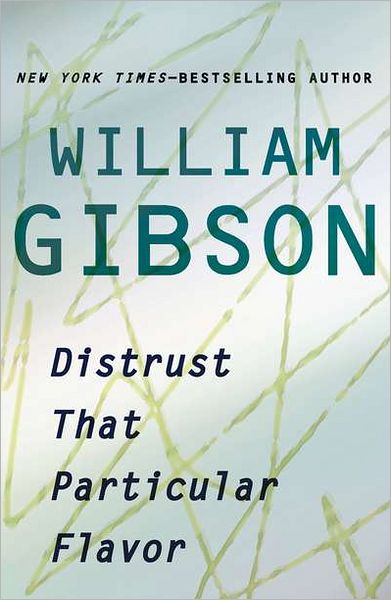
Uglies by Scott Westerfeld
Book #7 for 2012: Uglies by Scott Westerfeld
Book #8 for 2012: Pretties by Scott Westerfeld
Book #9 for 2012: Specials by Scott Westerfeld
Book #10 for 2012: Extras by Scott Westerfeld
There was an article in The New Yorker a couple of years ago, which you can read here, about the current trend toward dystopian science fiction novels for YA — young adult — readers. The most prominent example of the trend, especially at the moment, is Suzanne Collins’s The Hunger Games, the film version of which just had one of the most successful opening weekends in movie history. (Actually, it’s the first of a trilogy, so there are at least two more films coming, more likely three given the current trend to break the last book of a YA series into two films as a way of giving the cash cow an additional udder to milk).
I read the entire Hunger Games trilogy about the time the final volume came out in the summer of 2010. (Those of you dying to read my review can find it here.) It’s an immensely readable series of books and I gobbled it up in about a week, as have apparently about a billion or so teens (and possibly as many adults) around the world. I enjoyed it so much that I began looking around to see what sorts of things other YA writers have done with dystopian themes and somehow alighted on Scott Westerfeld’s Uglies series. Let’s just say my results were mixed.
Here’s a quick sketch of what the Uglies books are about: The first volume, simply titled Uglies, takes place two or three centuries in the future, after our society has pretty much strip mined and clear cut the planet to the breaking point and then gone defunct. (Ironically, the strip mining and clear cutting aren’t why our current society — known in the future as “rusties,” because we left so much abandoned metal behind — no longer exists. What we actually did wrong was to inadvertently engineer a bacterium that eats reserves of petroleum and, whoops, there goes our continuing dependence on the internal combustion engine.) To rectify the mistakes of the past, society has rebuilt itself as a loose network of relatively small cities separated by deliberately preserved wilderness and our energy needs seem to be largely supplied by solar power. Transportation not involving walking is mostly handled by magnetic levitation, which allows not only for cool hovercraft and high-speed maglev trains but airborne surfboards that kids can use the same way skateboards are used today, except even more recklessly. It’s not reckless hovering that puts the dys in this particular topia, though: It’s cosmetic surgery. People have become obsessed with looking physically perfect. Radical surgical procedures have been developed that can make almost anyone flawlessly beautiful at the age of 16, after which they may become older (or, in the book’s futuristic slang, “crumbly”), but still remain kind of hot.
The heroine of the first three books (which are structured as a trilogy with a more or less continuous plot) is Tally Youngblood, a 15-year-old going on 16 who is waiting eagerly to go under the knife and achieve perfection. Right now she’s an Ugly, which means she looks about as hideously flawed as you or I do (or more like you or I did at age 15, when we were probably cuter than we are now). At 16 she will be allowed to become a Pretty and move off to New Pretty Town, where all the newly minted Pretties hang out and do airheaded things. (One of the things that our society apparently didn’t do wrong was to ruin the economy, because most people in this future society don’t seem to need to work for a living if they don’t want to. Machines do everything that needs doing. Sounds like utopia to me.)
Alas, Tally makes friends with someone from a bad crowd — and in a dystopian novel “bad crowd” usually means “group of rebels who discover that things aren’t as nice as they seem.” What isn’t so nice in Tally’s world, it turns out, is that the prettifying surgery tends to be accompanied by some unpublicized brain surgery, where people are made almost literally airheaded by having little holes punched into strategic locations in their forebrains, to keep them docile and less likely to do the stupid sorts of things their ancestors did. Through a convoluted series of events, Tally is blackmailed by the secret police (scary-looking Pretties, as oxymoronic as that may sound, known as Special Circumstances, or just Specials) to infiltrate the rebels, who live in a secret location called “the smoke,” where she is to broadcast their location and betray them. Naturally, Tally turns out to like the rebels but accidentally betrays them anyway, allowing for tons of action in the second half of the book.
As silly as I make all this sound, Uglies is actually quite readable and more than a little fun. As semi-mindless entertainment goes, it’s worth a read, by which I mean a read by human beings over the age of 15. (Human beings 15 and under probably don’t need the encouragement.) Unfortunately, Westerfeld didn’t stop with one book, and I found that the continuing adventures of Tally Youngblood grew continuingly more tedious as the trilogy went on. (Tally herself, who seems to go through a dire but logically justified personality change with each volume, also becomes continuingly more obnoxious.) By the climax of the third book, which completes the initial plot arc, I was ready to quit. But the fourth book of the “trilogy,” appropriately entitled Extras, offered a brand new heroine and a brand new premise, so I decided to stick it out.
And I didn’t entirely regret it. By the time the events of the fourth volume roll around, about three years have passed since the end of volume three and, this being a dystopian thriller, you can guess that major changes have taken place in society since volume one began. In the society of volume four (which seems to take place mostly in and around an unnamed city in Japan), the idea of becoming Pretty at age 16 has been abandoned and people have started doing their own thing. Some still become Pretty, some stay Ugly, some just become weird. In other words, it’s a kind of free-for-all society and it’s entertaining to read about for a few chapters. The heroine is a teenage girl named Asa Fuse, who’s a “kicker,” someone who generates news stories with her own hovercam and broadcasts them via whatever future equivalent of the Interwebs is currently in use. She falls in with, yes, a bad crowd and together they stumble on a strange plot to build mass drivers — basically, magnetic guns the size of mountains — that can fire immense bullets into the air with the kinetic potential to destroy cities, which appears to be what they’re going to be used for.
Asa’s own city runs on a “reputation economy” (a cute concept), where everyone has a ranking based on how many people know about them and talk about them, and when Asa “kicks” the mass driver story to the news feeds she becomes famous, which in the reputation economy also makes her rich. Needless to say, things turn out to be more complicated than they appear at first, and the second half of Extras involves Asa and her friends discovering what’s really going on and either stopping it or supporting it, depending on whether it turns out to be good or bad. (You won’t be surprised to hear that, at various points in the novel, they do both.)
Westerfeld is a competent writer and has the sort of lean, muscular, somewhat superficial style one would expect of a YA science fiction writer. He also has that magical ability that makes you just curious enough to know what’s going to happen that you keep turning the pages. But that’s not really what you want to know, is it? What you really want to know is: Are the Uglies books as good as the Hunger Games books?
Of course not. This series was actually published shortly before the Suzanne Collins novels, but nobody has leaped at the chance to make a blockbuster movie series out of it yet, have they? So clearly Westerfeld lacks the Collins touch. But why exactly aren’t the Uglies books as good as The Hunger Games volumes? I mean, the plots are similar. A teenage girl gets caught up fighting the authorities in a nasty, totalitarian future society and finds courage and self-confidence through the act of defiance. It’s a highly kickable premise, as Asa would say. What exactly does Westerfeld do wrong?
Maybe the real question is: What does Collins do right? Two things come to mind. The first is that Collins has a more compelling premise — a group of people trying to kill one another on a reality TV show. Note that I didn’t say it was an original premise. Much has been made of the resemblance of The Hunger Games to the Japanese film Battle Royale, but Stephen King used the same basic plot two decades earlier in his Richard Bachman novel The Running Man, which was made into a movie in the 80s with Arnold Schwarzenegger, and science fiction writer Robert Sheckley used it way back in 1958 in his short story “The Prize of Peril.” (Reality TV has been around for a long time.) But regardless of how overused the plot may be, Collins pulls it off as well as anybody ever has (with the possible exception of the makers of Battle Royale, which I’ve never seen) and makes it engrossing in that “I think I’ll stop sleeping and eating for a few days in order to finish reading this” way. (Unfortunately she uses essentially the same plot in all three books of the trilogy, with a major variation in the third, which gets a little wearisome, but Westerfeld goes out of his way to make the plots of each of his books completely different, and that turns out to be even more wearisome. So maybe Collins was onto something.)
The other thing Collins does right is to create a fully three-dimensional protagonist in Katniss Everdeen. Though the world of The Hunger Games is a bit sketchy — Exactly what sort of disaster befell the human race, anyway? Does she ever explain? — Katniss is so sympathetic and believably heroic that you don’t really care. Tally Youngblood, on the other hand, seems rather interesting at the beginning of the Uglies books, but by volume two I was already hoping that Westerfeld would just push her off the top of a hovercraft and get it over with. (Actually, I think he does this at one point, but Tally’s society has devised magnetic bracelets that make falling a lot less dangerous than it used to be in ours. So much for killing off our heroine.)
By the way, if there’s any moral to be gleaned so far from my survey of YA dystopias, it’s that the dystopias themselves are purely plot devices. Brave New World and 1984 were genuine warnings about the excesses of human behavior, but despite Westerfeld’s sloganeering against strip mining, clear cutting, genetic engineering, obsession with beauty, et al, the dystopias in both The Hunger Games trilogy and the Uglies series exist mainly just to be mean to people. After all, every thriller needs a good villain. These days, in the world of YA fiction, dystopias are it.









